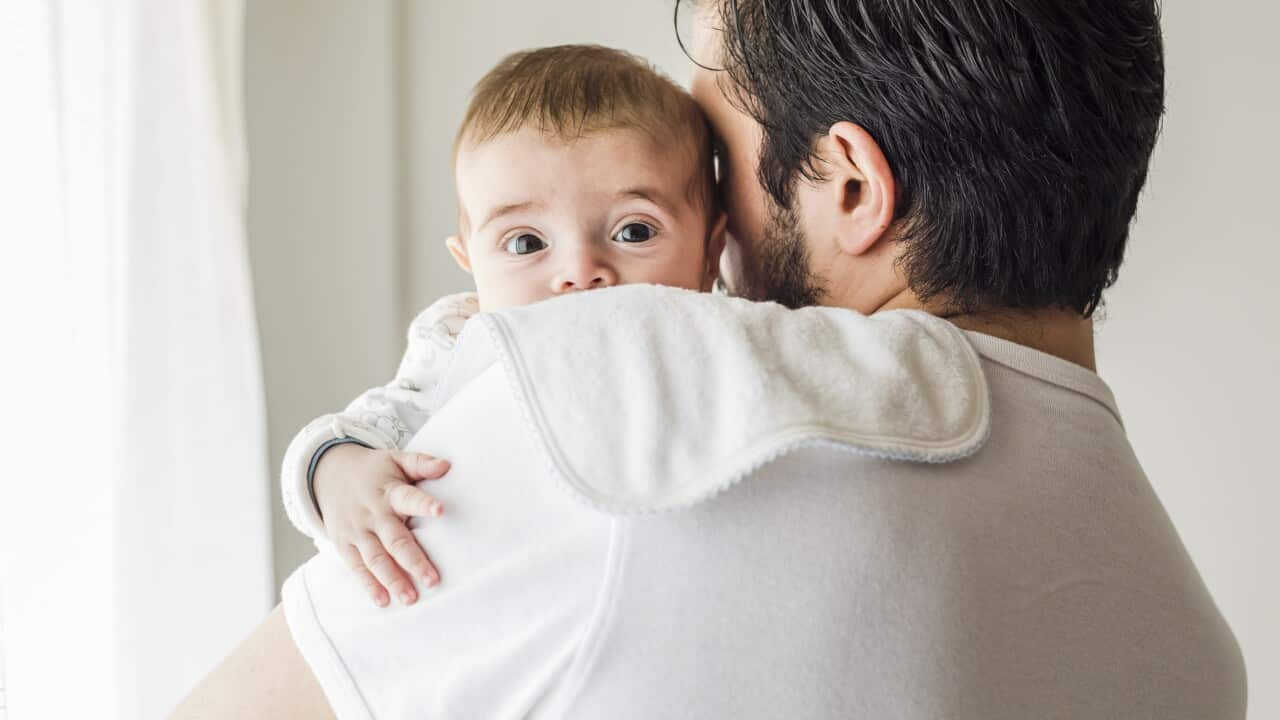Silviya Nagpal has crystal-clear memories of the challenges she faced as a new mother.
Nineteen months ago when she and her husband, Sourabh, welcomed their first child, Innaya, into their lives, there was a lot to celebrate.
But there was a cloud of constant stress, too.
In order to spend quality time with her newborn, Ms Nagpal decided to take one year maternity leave, of which only 18 weeks was covered under the federal government’s paid parental leave scheme.
“There was a sense of guilt that I was not contributing financially,” Ms Nagpal, who lives in Marsden Park in Sydney’s north-west, told SBS News.
“I started stressing and started to think of different ways to make [an] income so I could help my husband carry the load,” she said.
At one point, Ms Nagpal resorted to selling furniture on Facebook Marketplace.
For same-sex couple Vignesh and Andrea Carboni, the circumstances were even more challenging.
A year ago, their daughter Meenakshi was born through surrogacy. Due to financial pressures both had to return to work soon after they ran out of paid parental leave.

Same-sex couple Vignesh (left) and Andrea Carboni suffered separation anxiety when they had to send their five-month old daughter Meenakshi to daycare. Credit: Instagram.com/dads.of.meenakshi
“It was the hardest thing because she was a baby — she hadn’t even started crawling or walking.
“Sending a five-month-old to daycare three days a week — you suffer as parents.
“We suffered quite a lot from separation anxiety … it was a very tough period for us to get adjusted to.”
How Australia compares to other progressive nations
Under federal laws, parents in Australia are entitled to 20 weeks of paid parental leave at the federal minimum wage.
Of that leave, the child’s primary caregiver — in most cases, the mother — is entitled to 18 weeks, while the remaining two weeks can be claimed by the non-primary caregiver (in most cases, the father).
Of the 38 nations that are part of the Organisation for Economic Co-operation and Development (OECD), 31 nations offer longer paid maternity leave than Australia, with the following countries offering the highest: Slovak Republic (164 weeks), Finland (161 weeks) and Hungary (160 weeks).
When it comes to paid paternity leave, Australia’s performance is somewhat better among the OECD countries, with 20 nations offering either the same duration or less than Australia.
But even then Australia lags behind the average, with Australian fathers getting only two weeks as opposed to the OECD average of 8.7 weeks.

She said while paid parental leave vastly varies from one country to another, most progressive nations around the world offer “very generous schemes”.
In Canada, for instance, parents can make use of up to 69 weeks of paid parental leave, Ms Baird said.
“Another model is the UK scheme, which is really focussed on mothers rather than fathers, and it pays 39 weeks at about 90 per cent of replacement wage for most of that time,” Professor Baird said.
Georgie Dent – executive director of parent advocacy group The Parenthood – agrees Australia lags far behind many other progressive nations.
“Families here really do miss out on the availability and adequacy of paid parental leave,” she told SBS News.
“The system that we have right now doesn’t give families very much choice at all,” she said.

“This means that all parents who are eligible for government-funded paid parental leave can access this support when needed,” Ms Rishworth said.
“In contrast, most OECD countries fund parental leave payments through contributory schemes or social insurance models where only people who have paid contributions can access parental leave payments.”
Reforms to the Australian model have been suggested but are they enough?
Professor Baird said one of the main criticisms of the current paid parental leave scheme in Australia is that it has only two weeks set aside for non-primary caregivers, which are often the fathers.
“One suggestion is to combine the 18 weeks with those two weeks in total, which parents could share between them as they deem fit,” Professor Baird said.
In the statement to SBS News, Ms Rishworth confirmed “the government is committed to a paid parental leave scheme that offers choice and flexibility for working parents”.
“Parenting is an equal partnership and families should be able to choose how they balance work and care,” she said.
But even that reform won’t go far enough in addressing challenges parents in Australia face, Professor Baird pointed out.
“On one hand that style of scheme would be more gender equitable, in that both mothers and fathers could take it, it doesn’t extend the total duration at all,” she said.
Ms Dent of The Parenthood said extending the duration of paid parental leave in Australia would be a step in the right direction.
“We know that reforming paid parental leave is one of the few levers at the government’s disposal to influence the caring patterns in homes,” she said.
Professor Baird said even the amount of the payment, $812.60 per week, the same as the national minimum wage, needs to increase.
“A payment level at the national minimum wage is generally not enough income for a father or a main breadwinner in a household,” she said.











